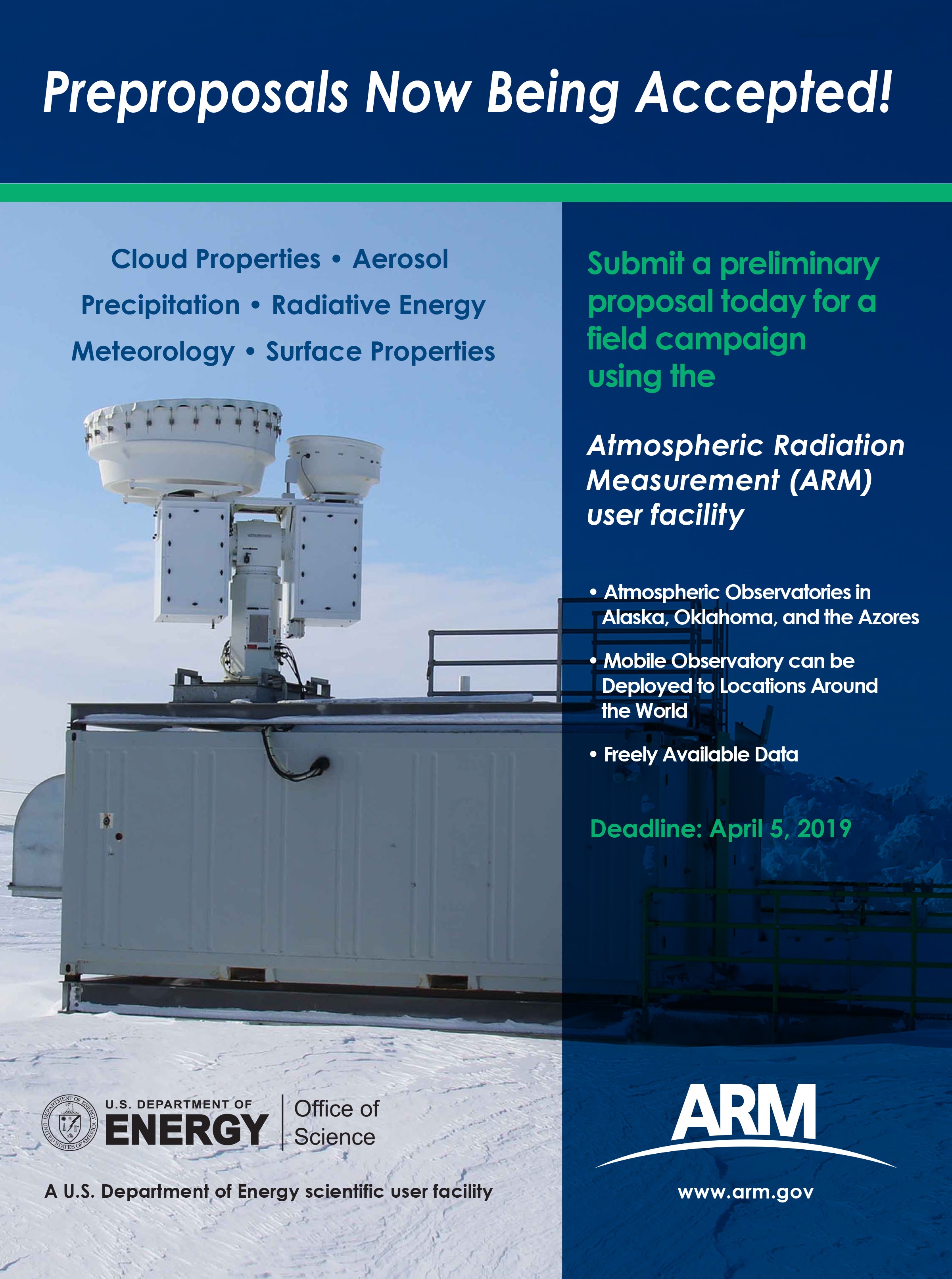Request for Preproposals for Use of the U.S. Department of Energy’s ARM User Facility
Published: 19 March 2019
Update February 19, 2019: ARM will consider proposals to fly guest instruments on tethered balloon systems at Oliktok Point, Alaska, or the Southern Great Plains (SGP) atmospheric observatory. Flights will take place in late summer (August) at Oliktok, or summer or fall at the SGP. Submit by March 15 to be considered.
Update February 9, 2019: An early online release of the DOE-sponsored ARM Mobile Facility Workshop Report is available now for those interested. (This report was published in April 2019 and is now available online here.)

The U.S. Department of Energy (DOE) is now accepting preliminary proposals from scientists worldwide to use components of the Atmospheric Radiation Measurement (ARM) user facility for field campaigns.
Preproposals are due April 5, 2019, for:
- Use of the second ARM Mobile Facility – AMF2 will be available for deployment beginning in January 2022. Note: The Scanning ARM Cloud Radar (SACR) will not be offered with AMF2.
- Supplemental campaigns – Moderate-size campaign proposals to augment an ARM atmospheric observatory will be considered for calendar years 2020−2021.
- Note: The Gulfstream-159 research aircraft will not be available for this call.
Submit preproposals online through the field campaign preproposal form.
Be sure to check the ARM campaign page for more details, including current campaigns and capabilities, and proposal due dates. Proposed deployments should focus on research that addresses the ARM mission of improving the understanding and representation of clouds and aerosols in earth system models, as well as their interactions and coupling with the Earth’s surface.
Priority will be given to proposals that:
- make comprehensive use of the ARM facilities
- focus on strategic goals of the DOE Office of Biological and Environmental Research (BER)
- have the ability to improve regional or global earth system models.
Proposals that coordinate with other BER community capabilities (e.g., Environmental Molecular Sciences Laboratory, AmeriFlux Network, Next Generation Ecosystem Experiments in the Arctic and Tropics, Energy Exascale Earth System Model) are encouraged.
Read the ARM article on five tips for a successful campaign proposal.
Keep up with the Atmospheric Observer
Updates on ARM news, events, and opportunities delivered to your inbox
ARM User Profile
ARM welcomes users from all institutions and nations. A free ARM user account is needed to access ARM data.


















